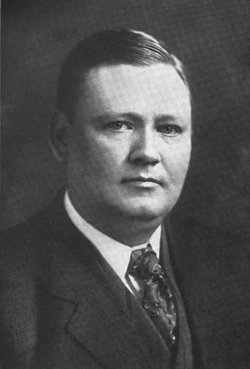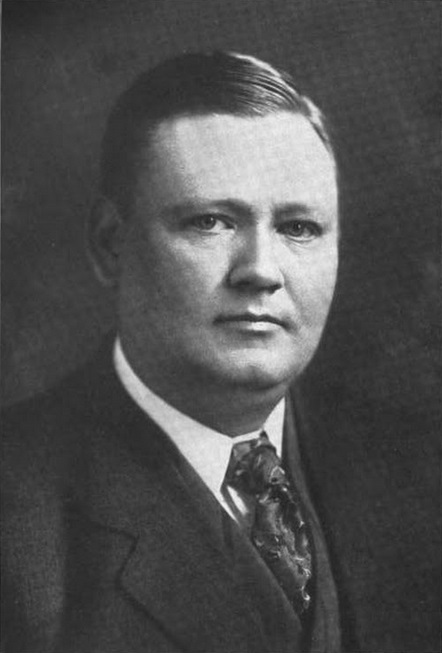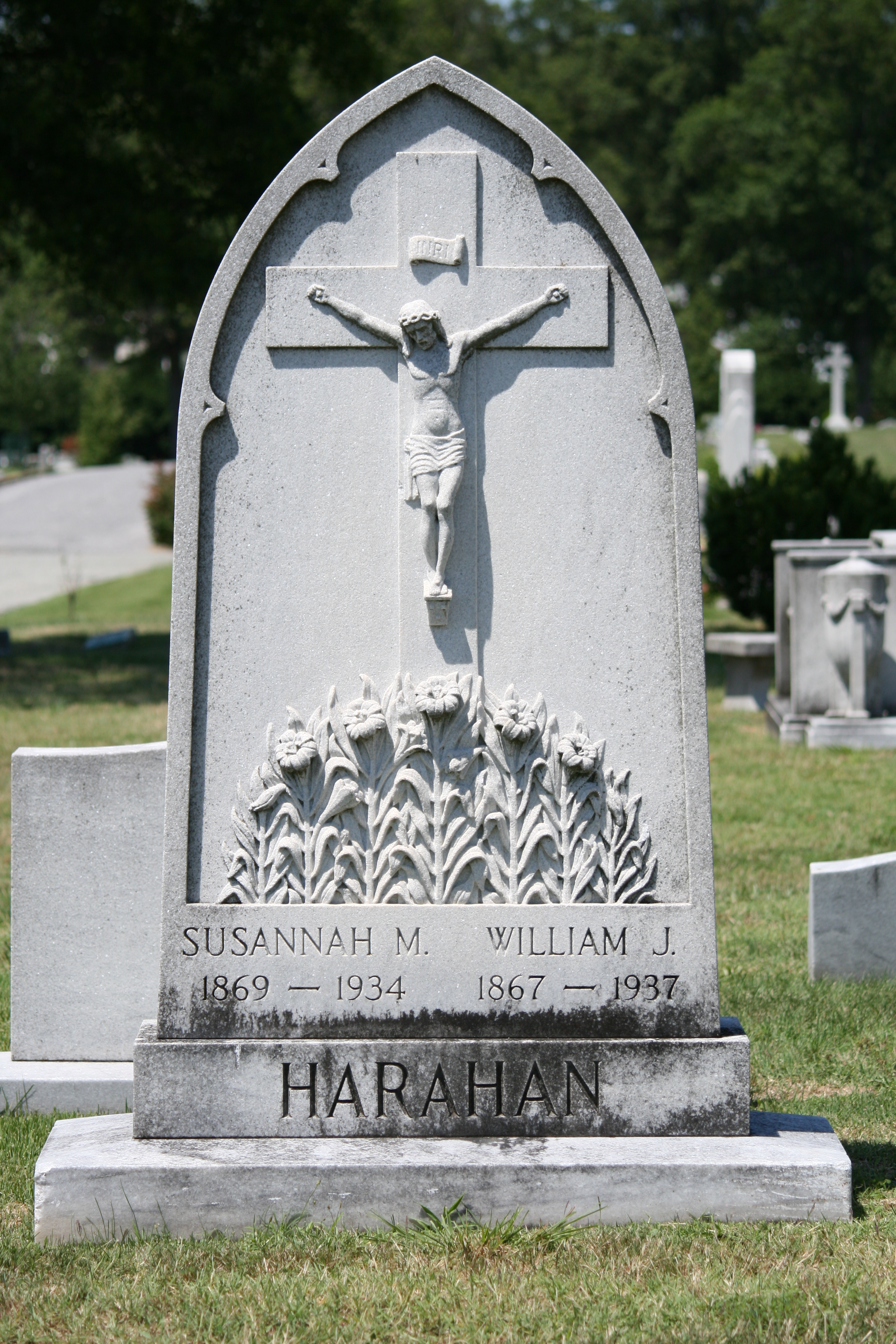In New Orleans Harahan attended school and St. John's College, from which he was graduated in 1885. During his summer vacations he worked as a shop apprentice and at various other minor jobs on the Louisville and Nashville Railroad, of which his father was a division superintendent.
After graduation, following his father's example and with his encouragement, Harahan started railroading in earnest. Both Harahans worked for the same railroads for twenty-five years. They were together on the Chesapeake and Ohio in 1889, with the elder serving as general manager of the road and the son as engineer of maintenance of way. They were together again on the Illinois Central, for which young Harahan worked from 1892 to 1907.
During these years he held such positions as roadmaster and trainmaster of the Pontiac division, assistant division superintendent, superintendent of the Louisville division, chief engineer, assistant general manager, general manager, and finally, from 1905, vice-president. Thus in the years of his apprenticeship William J. Harahan built a notable and successful railroad career, embracing a varied experience in the shops, in the different branches of railroad engineering, and in executive operating posts.
In 1907, while serving as fourth vice-president of the Illinois Central under the presidency of his father, Harahan decided to silence any suspicion of parental influence by launching out on his own and accepted an appointment as assistant to the president of the Erie. Less than four years later he had risen to be vice-president, and a year later he became president of the Seaboard Airline Railway, serving also as federal manager of the latter line during World War I.
In 1920 Harahan was appointed president of the Chesapeake and Ohio. Impaired health forced him to resign in 1929, but when his successor, John J. Bernet, died in 1935, Harahan's health had improved to such an extent that he was able once again to assume the presidency, taking on in addition the same office on the Nickel Plate and Pere Marquette railways. The distinction of having been called twice to the presidency of a major line is a rare one in railroad history, to say nothing of managing three important, separately operated railroad lines at the same time.
In 1920, finding that the road lacked a physical connection with its subsidiary outlet to the Great Lakes ports, the Hocking Valley, Harahan effected a connection by means of a 63-mile double-track main line between Gregg and Valley Crossing, Ohio. This section was finished in ten months, an all-time construction record in railroad history. Harahan also acquired feeder lines for access to additional coal traffic, purchased better equipment, and extended the C. & O. 's sphere in the marketing of coal through affiliation with such adjoining lines as the Nickel Plate, the Pere Marquette, and the Erie.
He died of septicemia after a three weeks' illness in the Chesapeake and Ohio hospital in Clifton Forge, Virginia. A solemn requiem mass was held in the Cathedral of the Sacred Heart in Richmond, Virginia, and burial was in Mount Calvary Cemetery, Richmond. For one minute, as the service began, operations stopped in silent tribute on the three lines he had served.
William Johnson Harahan went down in history as a prominent railroad executive. He is probably best remembered as the president the Chesapeake and Ohio Railway; under his management the C. & O. developed in mileage, facilities, efficiency, traffic, and investment in road and management increased by $234, 820, 301 during the years 1920-1929. As Harahan advanced in years his ideas stayed young, and he was one of the most militant and insistent advocates of railway laboratory work and experimentation with new methods and facilities.
A devout churchman, Harahan interested himself actively in Catholic charities.
Harahan was vice-president of the Society for the Propagation of the Faith of the diocese of Richmond, honorary vice-president of the Catholic Conference on Family Life, and director of the National Council of Catholic Men.
A painstaking executive, Harahan reached decisions only after careful study of departmental reports. Often after a conference with his staff he would pack his briefcase and leave for a few days to analyze the situation fully. Besides his capacity for management, he was known for his kindly and considerate treatment of his personnel. The antithesis of the gruff disciplinarian, he was never too busy to see his employees, many of whom felt a kind of filial attachment for him. He was soft-spoken, couching instructions to his staff as "suggestions" rather than as orders.
Away from his work, Harahan lived quietly and unpretentiously. His instincts were scholarly, and he read widely in the classics and history.
On June 10, 1890, Harahan married Susannah Smith of Nashville, Tennessee, by whom he had thirteen children. Following his first wife's death, he married Mrs. Elizabeth Martha (Todd) Smith of Cleveland on March 23, 1935.
His greatest source of pleasure was his large family, which included not only his own children but also the children of his widowed sister and other orphaned children, making at one time a total of twenty-one.
In New Orleans Harahan attended school and St. John's College, from which he was graduated in 1885. During his summer vacations he worked as a shop apprentice and at various other minor jobs on the Louisville and Nashville Railroad, of which his father was a division superintendent.
After graduation, following his father's example and with his encouragement, Harahan started railroading in earnest. Both Harahans worked for the same railroads for twenty-five years. They were together on the Chesapeake and Ohio in 1889, with the elder serving as general manager of the road and the son as engineer of maintenance of way. They were together again on the Illinois Central, for which young Harahan worked from 1892 to 1907.
During these years he held such positions as roadmaster and trainmaster of the Pontiac division, assistant division superintendent, superintendent of the Louisville division, chief engineer, assistant general manager, general manager, and finally, from 1905, vice-president. Thus in the years of his apprenticeship William J. Harahan built a notable and successful railroad career, embracing a varied experience in the shops, in the different branches of railroad engineering, and in executive operating posts.
In 1907, while serving as fourth vice-president of the Illinois Central under the presidency of his father, Harahan decided to silence any suspicion of parental influence by launching out on his own and accepted an appointment as assistant to the president of the Erie. Less than four years later he had risen to be vice-president, and a year later he became president of the Seaboard Airline Railway, serving also as federal manager of the latter line during World War I.
In 1920 Harahan was appointed president of the Chesapeake and Ohio. Impaired health forced him to resign in 1929, but when his successor, John J. Bernet, died in 1935, Harahan's health had improved to such an extent that he was able once again to assume the presidency, taking on in addition the same office on the Nickel Plate and Pere Marquette railways. The distinction of having been called twice to the presidency of a major line is a rare one in railroad history, to say nothing of managing three important, separately operated railroad lines at the same time.
In 1920, finding that the road lacked a physical connection with its subsidiary outlet to the Great Lakes ports, the Hocking Valley, Harahan effected a connection by means of a 63-mile double-track main line between Gregg and Valley Crossing, Ohio. This section was finished in ten months, an all-time construction record in railroad history. Harahan also acquired feeder lines for access to additional coal traffic, purchased better equipment, and extended the C. & O. 's sphere in the marketing of coal through affiliation with such adjoining lines as the Nickel Plate, the Pere Marquette, and the Erie.
He died of septicemia after a three weeks' illness in the Chesapeake and Ohio hospital in Clifton Forge, Virginia. A solemn requiem mass was held in the Cathedral of the Sacred Heart in Richmond, Virginia, and burial was in Mount Calvary Cemetery, Richmond. For one minute, as the service began, operations stopped in silent tribute on the three lines he had served.
William Johnson Harahan went down in history as a prominent railroad executive. He is probably best remembered as the president the Chesapeake and Ohio Railway; under his management the C. & O. developed in mileage, facilities, efficiency, traffic, and investment in road and management increased by $234, 820, 301 during the years 1920-1929. As Harahan advanced in years his ideas stayed young, and he was one of the most militant and insistent advocates of railway laboratory work and experimentation with new methods and facilities.
A devout churchman, Harahan interested himself actively in Catholic charities.
Harahan was vice-president of the Society for the Propagation of the Faith of the diocese of Richmond, honorary vice-president of the Catholic Conference on Family Life, and director of the National Council of Catholic Men.
A painstaking executive, Harahan reached decisions only after careful study of departmental reports. Often after a conference with his staff he would pack his briefcase and leave for a few days to analyze the situation fully. Besides his capacity for management, he was known for his kindly and considerate treatment of his personnel. The antithesis of the gruff disciplinarian, he was never too busy to see his employees, many of whom felt a kind of filial attachment for him. He was soft-spoken, couching instructions to his staff as "suggestions" rather than as orders.
Away from his work, Harahan lived quietly and unpretentiously. His instincts were scholarly, and he read widely in the classics and history.
On June 10, 1890, Harahan married Susannah Smith of Nashville, Tennessee, by whom he had thirteen children. Following his first wife's death, he married Mrs. Elizabeth Martha (Todd) Smith of Cleveland on March 23, 1935.
His greatest source of pleasure was his large family, which included not only his own children but also the children of his widowed sister and other orphaned children, making at one time a total of twenty-one.
Family Members
-
![]()
Mary Ellen Harahan Stein
1891–1933
-
![]()
James Theodore Harahan
1892–1955
-
![]()
Susannah M Harahan
1894–1894
-
![]()
Mrs Ruth Mary Harahan Mouquin
1895–1980
-
![]()
Mrs Susannah Margaret Harahan Markey
1897–1986
-
![]()
Catharine Harahan Norton
1900–1950
-
![]()
William Johnson Harahan Jr
1902–1971
-
![]()
Rachel M. Harahan
1904–1918
-
![]()
John Edward Harahan
1906–1921
-
![]()
Joseph Patrick Harahan
1908–1970
-
![]()
Sr Catharine Virginia Harahan
1909–1980
-
![]()
Sr William Susannah Theodore Harahan
1912–1968
-
![]()
Thomas P Harahan
1913–1916
Sponsored by Ancestry
Advertisement
Advertisement































